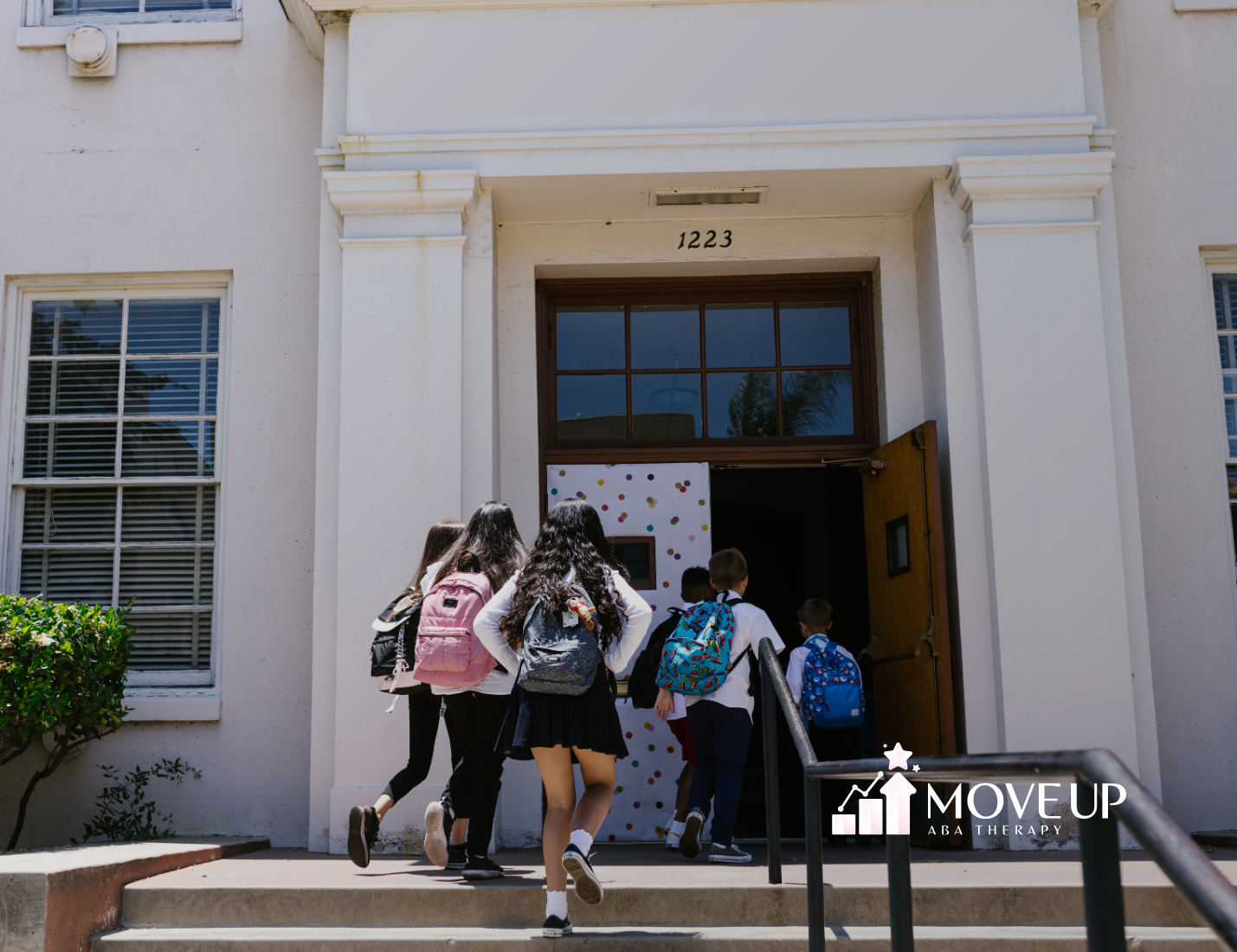Understanding Autism Learning Styles
Importance of Learning Styles
Recognizing the importance of learning styles is crucial for supporting individuals with autism. Children with autism spectrum disorder (ASD) and their neurotypical peers benefit from exposure to various learning styles and teaching methods. Studies show that supporting children’s favored learning styles can enhance performance in all areas.
Most children on the autism spectrum have one preferred primary learning style. It is essential to observe and understand how a child takes in information from the environment to create a positive learning experience, especially for those with sensory processing disorder symptoms.
Autistic individuals often learn in ways that differ from neurotypical learners. Learning styles generally fall into categories such as visual learners, auditory learners, kinesthetic learners, logical learners, and social vs. solitary learners.
Impact on Learning Outcomes
Understanding and accommodating diverse learning styles is necessary for fostering inclusive and effective learning environments for autistic children. Strategies such as visual aids, graphic organizers, repetition, reading material, and hands-on activities are essential for supporting different learning styles in individuals with autism.
Individuals with intellectual disabilities benefit from personalized instructional strategies that cater to their unique needs and learning styles. By understanding students’ strengths, challenges, interests, and aspirations, educators can design instruction that addresses their individual needs and empowers them to succeed academically and socially.
| Learning Style | Characteristics | Strategies |
|---|---|---|
| Visual | Learns best through seeing | Visual aids, graphic organizers |
| Auditory | Learns best through listening | Listening activities, role-playing |
| Kinesthetic | Learns best through doing | Hands-on projects, movement-based learning |
| Logical | Learns best through reasoning | Problem-solving tasks, logical sequences |
| Social | Learns best in groups | Group activities, collaborative projects |
| Solitary | Learns best alone | Independent study, self-paced learning |
For more information on specific strategies, visit our articles on visual learning strategies for autism and auditory learning techniques for autism. Understanding these learning styles and their impact on learning outcomes can significantly enhance the educational experience for individuals with autism.
Visual Learning Strategies
Visual learning strategies are essential for individuals with autism, as they often benefit from clear and structured visual aids. These strategies can enhance understanding, facilitate communication, and build confidence.
Utilizing Visual Aids
Visual aids are powerful tools for supporting individuals with autism. They include books, videos, charts, pictures, and graphs. These aids help in breaking down complex information into manageable parts, making it easier to comprehend and retain.
Visual supports are particularly beneficial for individuals with intellectual disabilities, including autism. They enhance understanding, facilitate communication, build confidence, and encourage self-advocacy. By using visual aids, educators can create a more inclusive and supportive learning environment.
| Type of Visual Aid | Benefits |
|---|---|
| Books | Provide structured information |
| Videos | Offer dynamic and engaging content |
| Charts | Break down complex data |
| Pictures | Simplify concepts |
| Graphs | Visualize relationships and patterns |
For more information on how to create an autism-friendly learning environment, visit our article on autism-friendly learning environments.
Incorporating Color Coding Methods
Color coding is another effective visual learning strategy for individuals with autism. By using different colors to categorize and organize information, learners can quickly identify and differentiate between various concepts.
Color coding methods can be applied in various ways, such as:
- Organizing materials: Use colored folders or labels to categorize subjects or topics.
- Highlighting text: Use different colored highlighters to emphasize key points or important information.
- Creating schedules: Use colored blocks to represent different activities or tasks in a daily schedule.
These methods help in creating a structured and predictable learning environment, which is crucial for individuals with autism.
By incorporating visual aids and color coding methods, educators can effectively support the diverse needs of learners with autism. These strategies not only enhance understanding and communication but also foster independence and confidence in students.
Auditory Learning Approaches
Auditory learning approaches are essential for individuals with autism who benefit from listening and speaking activities. These methods can significantly enhance their learning experience and outcomes.
Engaging Listening Activities
Engaging listening activities are crucial for auditory learners. These activities can include listening to audiotapes, music, or stories. Incorporating these elements into the learning process can help auditory learners better understand and retain information. According to Autism NOW, children with auditory learning styles benefit greatly from such activities.
Some effective listening activities include:
- Audiobooks: Listening to stories can improve comprehension and vocabulary.
- Music Therapy: Using music to teach concepts or calm the mind.
- Interactive Read-Alouds: Engaging students by reading aloud and asking questions.
Role-Playing for Learning
Role-playing is another effective auditory learning approach. It allows individuals with autism to practice social skills, understand different perspectives, and engage in interactive learning. Role-playing can be particularly beneficial in teaching communication skills and empathy.
Some role-playing activities include:
- Social Scenarios: Practicing greetings, conversations, and other social interactions.
- Story Reenactments: Acting out scenes from books or stories to enhance understanding.
- Problem-Solving Exercises: Working through hypothetical situations to develop critical thinking skills.
By incorporating these auditory learning approaches, educators and caregivers can create a more inclusive and effective learning environment for individuals with autism. For additional strategies, explore our resource on autism learning styles.
Kinesthetic Learning Activities
Kinesthetic learning activities are essential for individuals with autism who thrive on movement and tactile engagement. These activities help make lessons more concrete and engaging, catering to their unique learning styles.
Hands-On Projects
Hands-on projects are a cornerstone of kinesthetic learning. These activities allow learners to physically engage with materials, making abstract concepts more tangible. Children with a tactile or kinesthetic learning style benefit greatly from such activities.
Examples of hands-on projects include:
- Building Models: Creating physical models of concepts, such as building a volcano to understand geological processes.
- Science Experiments: Conducting simple experiments to explore scientific principles.
- Art Projects: Using various art materials to express ideas and emotions.
These projects not only enhance understanding but also keep learners engaged and motivated.
Movement-Based Learning Stations
Movement-based learning stations are another effective strategy for kinesthetic learners. These stations allow students to move around and engage in different activities, catering to their need for physical activity and tactile input.
Examples of movement-based learning stations include:
- Sensory Stations: Areas with sensory devices like textured objects, fidget tools, and tactile boards.
- Physical Activity Stations: Incorporating activities like jumping jacks, yoga, or dance to break up lessons and keep learners active.
- Outdoor Learning: Taking lessons outside to explore nature and engage in physical learning experiences.
These stations help make learning more dynamic and interactive, which is crucial for kinesthetic learners.
| Activity Type | Example | Benefits |
|---|---|---|
| Hands-On Projects | Building Models, Science Experiments, Art Projects | Enhances understanding, keeps learners engaged |
| Movement-Based Learning Stations | Sensory Stations, Physical Activity Stations, Outdoor Learning | Provides physical activity, caters to tactile input |
Kinesthetic learning activities, such as hands-on tasks and movement-based learning, are effective teaching strategies for students with intellectual disabilities, including autism. These activities help make lessons more concrete and engaging for these individuals.
Adapting Teaching Methods
Adapting teaching methods to meet the unique needs of individuals with autism is crucial for fostering a positive and effective learning environment. This section explores the importance of tailoring educational approaches to individual needs and developing personalized intervention plans.
Tailoring to Individual Needs
Most children on the autism spectrum have a preferred primary learning style. Observing and understanding how a child processes information from their environment is essential for creating a positive learning experience, especially for those with sensory processing disorder symptoms. Adapting teaching methods to meet a child’s specific learning needs can lead to positive outcomes, including increased educational output, decreased resistive behaviors, and improved self-esteem and behaviors in the classroom.
To tailor teaching methods effectively, educators should:
- Identify the child’s preferred learning style: Whether it is visual, auditory, or kinesthetic, understanding the child’s strengths and preferences is the first step in adapting teaching methods.
- Incorporate multi-sensory approaches: Using a combination of visual aids, auditory cues, and hands-on activities can help engage the child and reinforce learning.
- Provide immediate feedback: Direct and immediate feedback helps individuals with intellectual disabilities make connections between their behavior and the teacher’s response, aiding in the learning process.
Personalized Intervention Plans
Personalized intervention plans are essential for addressing the unique needs of each child with autism. Applied Behavior Analysis (ABA) therapy plays a vital role in tailoring learning approaches to suit each child’s strengths. ABA therapists assess a child’s learning style and develop personalized intervention plans using reinforcement strategies to build essential skills.
Key components of personalized intervention plans include:
- Assessment of strengths and challenges: Understanding the child’s strengths, challenges, interests, and aspirations allows educators to design instruction that addresses their individual needs and empowers them to succeed academically and socially.
- Goal setting: Setting specific, measurable, achievable, relevant, and time-bound (SMART) goals helps track progress and ensures that the intervention plan is focused and effective.
- Reinforcement strategies: Using positive reinforcement to encourage desired behaviors and skills is a core principle of ABA therapy. This approach helps motivate the child and reinforces learning.
- Regular review and adjustment: Personalized intervention plans should be regularly reviewed and adjusted based on the child’s progress and changing needs.
By tailoring teaching methods and developing personalized intervention plans, educators can create a supportive and effective learning environment for individuals with autism.
Enhancing Learning Environment
Creating an optimal learning environment is crucial for individuals with autism. By enhancing the learning environment, educators and caregivers can significantly improve the learning outcomes for autistic individuals. This section will focus on the importance of structured routines and multi-sensory learning approaches.
Structured Routines
Structured routines are essential for individuals with autism as they provide a sense of predictability and security. A well-organized routine helps reduce anxiety and allows individuals to focus better on learning tasks. Adapting the learning environment at home by creating a structured routine can enhance an autistic child’s ability to absorb and retain information.
Key elements of a structured routine include:
- Consistent Daily Schedule: Establishing a consistent daily schedule helps individuals with autism understand what to expect throughout the day. This can include set times for waking up, meals, learning activities, and bedtime.
- Visual Schedules: Using visual supports such as charts, pictures, and graphs can enhance understanding and facilitate communication. Visual schedules provide a clear representation of the day’s activities, making it easier for individuals to follow along.
- Clear Transitions: Clearly defined transitions between activities help individuals with autism move smoothly from one task to another. This can be achieved by using visual or auditory cues to signal the end of one activity and the beginning of another.
Multi-Sensory Learning Approaches
Multi-sensory learning approaches engage multiple senses simultaneously, making it easier for individuals with autism to process and retain information. These approaches cater to different learning styles and can be particularly effective for kinesthetic learners. According to Forbrain, recognizing and accommodating diverse learning styles is necessary for fostering inclusive and effective learning environments for autistic children.
Examples of multi-sensory learning approaches include:
- Hands-On Activities: Incorporating hands-on projects and activities allows individuals to learn through touch and manipulation. This can include activities such as building models, using tactile materials, and engaging in sensory play.
- Movement-Based Learning: Movement-based learning stations encourage physical activity while learning. This can include activities such as dancing, jumping, or using balance boards to reinforce learning concepts.
- Assistive Technology: Utilizing assistive technology, such as interactive whiteboards, tablets, and specialized software, can enhance the learning experience by providing visual, auditory, and tactile feedback.
By incorporating structured routines and multi-sensory learning approaches, educators and caregivers can create an autism-friendly learning environment that supports the diverse needs of individuals with autism.
Final Thoughts
Understanding the different learning styles in autism—visual, auditory, kinesthetic, logical, social, and solitary—is essential for creating personalized, effective, and inclusive education plans. By tailoring strategies to meet each child’s strengths and preferences, we can help them thrive academically, socially, and emotionally. Whether it’s through visual aids, hands-on activities, or structured routines, recognizing and supporting unique learning needs makes all the difference.
At Move Up ABA, we specialize in creating individualized ABA therapy plans that align with your child’s learning style. Contact us today to learn how we can support your child’s growth and success!
Sources:
- https://www.forbrain.com/autism-learning/autism-learning-styles/
- https://autismnow.org/blog/the-learning-styles-of-children-with-autism-spectrum-disorder/
- https://www.mentalhealth.com/library/effective-teaching-methods-intellectual-disabilities
- https://theautismhelper.com/ways-to-color-code/
- https://pmc.ncbi.nlm.nih.gov/articles/PMC4457285/







